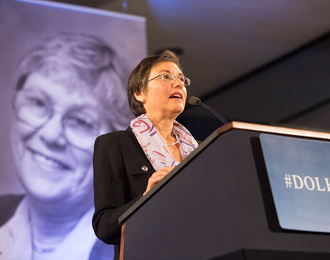 Academic Funding
Academic Funding Social Science Surveys Need to Be Ingenious in Finding Funding
On a recent wonderful trip back to my Ph.D. alma mater, the Ohio State University (marred only by a last second defeat of its football team), I had the delightful experience of spending time with the folks at the Center for Human Resources Research. CHRR, directed for years by economist Randall Olsen, has a new leader, sociologist Elizabeth Cooksey. It was begun by Herbert Parnes in 1965 to house the National Longitudinal Study of Labor Market Experiences, or NLS, a Department of Labor-funded study that asked people about significant experiences in their lives at multiple stages, focusing on work experience, education, and family. Today the center remains an example of a data-driven enterprise with innovations in methodology that has to constantly deal with the federal budgetary dramas that produce annual uncertainty and angst.
I have written elsewhere how one of my first experiences as a staff person at the Consortium of Social Science Associations was to help save the NLS. The original NLS surveyed older men (aged 45-59 in 1966) interviewed periodically from 1966-83 and for the final time in 1990. Many of its topics are now part of the Health and Retirement Study funded by the National Institute on Aging. A young men group (ages 14-24 as of 1966) was interviewed from 1966-81. There was also a mature women cohort (ages 34-43), who were interviewed between 1967 and 2003, and a young women group (ages 14-24), surveyed between 1968 and 2003. The data from these surveys are now archived at the Inter-university Consortium of Political and Social Research.

Howard J. Silver served for a quarter century as the executive director of the Consortium of Social Sciences Agencies. His blog appears monthly at Social Science Space.
The surveys, with their large samples (over 5,000 respondents in the original cohorts to over 12, 000 in the NLSY79), have supplemented the federal government’s other labor market information sources as input to its job training policies. According to the CHRR, data from the NLS have served as an important tool for economists, sociologists, and other researchers in the study of determinants of labor supply, earnings and income distribution, job search and separation, and labor market inequities. These data have also been used to study various social-psychological factors on labor force participation and the impact of governmental policies and programs.
The federal government has tried for many years to implement job training and re-training programs. The Kennedy administration and Congress enacted the Manpower Development and Training Act in 1962. The Comprehensive Employment and Training Act passed during the Nixon administration and lasted from 1973-82. Then during the Reagan administration, Congress enacted the Job Training Partnership Act, which lasted from 1983-98. Under President Clinton, the Workforce Investment Act became law. These were the major training programs, but there were many additional ones, such as the Job Corps, and Trade Adjustment Assistance, spread throughout the departments of Labor, Education, and Health and Human Services, and other agencies.
In 2014, Congress enacted and President Obama signed the Workforce Innovation and Opportunity Act that sought to consolidate these programs into one funding stream. One of the more interesting provisions of the new act mandates the replacement of “the nationwide employment statistics system, which the Secretary [of Labor] is required to oversee, with a nationwide workforce and labor market information system.” All these laws included funding for evaluating their efficacy, which has provided significant funding for researchers both in and out of academia.

Bureau of Labor Statistics Commissioner Erica Groshen inducts the late Janet Norwood into the Department of Labor’s Hall of Honor.
Even at an event celebrating NLS’ 50th anniversary in September 2015, Bureau of Labor Statistics Commissioner Erica Groshen made ominous suggestions that further budgetary problems for the agency may lead to choices that could create further difficulties for the future of these surveys.
A few years ago there was a concerted effort to try and get federal funding for a new cohort that would examine a new generation of young people born in the 21st century. In the current budget climate, this obviously did not happen. However, that goal is still out there on the horizon.
Given the federal budgetary difficulties, CHRR has turned to seeking funding from state agencies to carry out some innovative surveys. One I was told about during my visit, called the Ohio Study, collects information on how 17-year-olds spend their time during a typical week: where they go, who they spend time with, and what they do. The researchers, led by OSU sociologist Chris Browning, gather this information via a study-provided smart phone, in order to get a real-time glimpse into the daily lives of adolescents. This is, of course, a voluntary study, with protections from the Ohio State University’s Office of Responsible Research Practices.
The center is also conducting a study of rural youth in Pennsylvania to increase understanding of their educational, career and residential plans. Project funding has been provided, in part, by The Center for Rural Pennsylvania, a legislative agency of the Pennsylvania General Assembly as well as a grant from the U.S. Department of Agriculture’s National Research Initiative and Hatch Act.
The CHRR also houses and co-manages the Ohio Longitudinal Data Archive, which provides researchers with centralized access to state administrative data for education and workforce research. This is done in cooperation with the Ohio Department of Job and Family Services, the Ohio Department of Education, and the Ohio Board of Regents.
So, in these days of declining federal budgets for statistical agencies and for research, a place like the center has to explore all funding options to maintain its formidable work.
I will explore more on the future of major federally funded surveys, when I return in January.
Have a great holiday season!


























































































